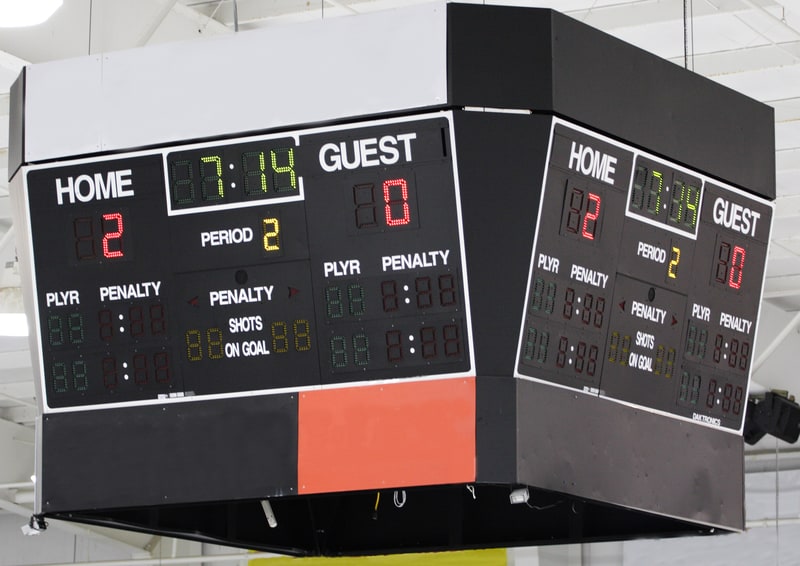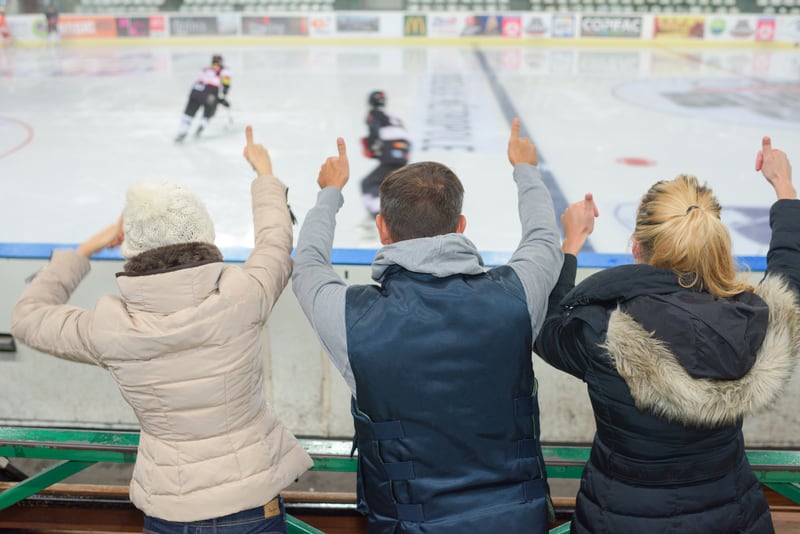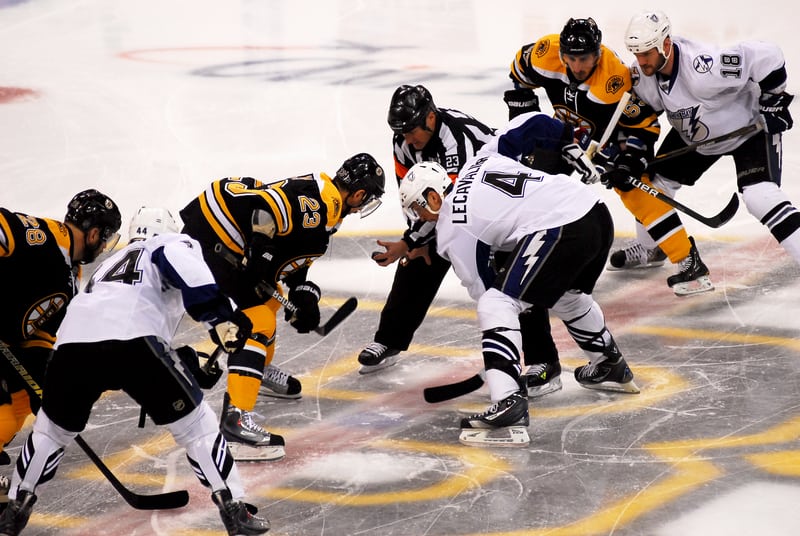A good question that might come to mind to someone who is new to hockey or has never watched a game could be about how long a game is and how the time is kept. I have been playing and watching all types of sports for my entire life. From a young age I have played and watched hockey and it has become one of my favourite sports. Now I help out with my both my sons teams.

How is time kept in Hockey? Time is kept in 20 minute periods. There are 3 Periods in a game called Regulation. If the game is tied it can go into extra periods.
The above answer is more typical for NHL hockey games. But you may be wondering about Minor hockey as well. Let have a look at it all so you leave here with all the answers you may be looking for.
Does Hockey Have Periods or Quarters?
Alright, here we go. Hockey games are different from football, basketball and soccer. Hockey games are timed in Periods. There are 3 periods in each game. In the NHL the periods are 20 minutes each. These 20 minute periods are called Regulation periods. If the game is tied it will go into Overtime.
There will be a 15 minute intermission between periods and if the game goes into overtime after the third period, there is a 5 minute break followed by the “4th” period which is 5 minutes. After the overtime period there will be a shootout, only in regular season games. In the playoffs, the games keep going and going and going until someone scores and wins the game.
In Minor hockey it starts a little different. In Novice there are some new rules regarding the times. There is a 3 minute warm up with two 22 minute halves. Only in novice is this the case and it is new in the 2019-2020 season.
Moving forward after novice you get back into the classic 3 period hockey games. There are guidelines for lengths of games at each level of hockey.
How Long Are Hockey Games?
The total length of an NHL game will be around two and a half hours. This all depends on overtime, stoppage of play (penalties, offside, goalie stoppages, etc). It’s pretty easy to assume you can spend upwards of 3 hours for a typical NHL game.

Now for Minor hockey which is what we focus on at YouthSportZone, it gets a little different. Starting in Novice there are two 22 minute half of running time play. With the 3 minute warmup a total game will last 47 minutes. Our scheduled ice time is allotted for 50 minutes. Giving us enough time to warm up, play, and shake hands at the end.
In most cases at the Atom level of hockey, the games last approximately 50 minutes. Each game will have 3 periods, 10-10-15 minute periods. In PeeWee, Bantam and Midget levels the games last 80 minutes and will also have 3 periods, 15-15-18. I know those numbers do not add up to exactly the total time of the games. That is because there are warmups, and a short break in between the second and third periods.
Who Decided Hockey Would Have 3 Periods?
In the beginning, when hockey started pre 1910, There were two 30 minute halves of hockey. The NHA (National Hockey Association), now the National Hockey League, were responsible for making these rules. The ice would get so rough and covered in snow from the players skates and hard play of hockey that it would slow the game done a lot.
After 1910 it was decided to make the take the two 30 minute periods and make them three 20 minute periods instead. This would allow a second cleaning between the second and third periods.
Because of this second cleaning, the game improved and also the players were better rested which helped keep their energy up for the rest of the game.
The rules have changed many times over the years, but the 20 minute 3 period rule has stuck around since after 1910 in all levels of hockey around the world.
Who Controls The Time Clock?
The Timekeeper is the person who has been trained to run the clock in a game situation. They are responsible for starting and stopping the clock when necessary. They are also responsible for keeping track of events during the hockey game on an official game sheet. Another name for a timekeeper is an Off-ice Official.
The timekeeper manages the time during a game. They are the person who stops the clock when needed. The clock needs to stop when:
- There is a Goal
- The goalie makes a save and covers the puck
- There is a penalty
- An Offside is called
- An Icing is called
There are many reasons why the clock must be stopped in a game, those are just a few examples. And for every stoppage in play, the timekeeper also needs to start the clock as soon as the game is resumed.
In Minor hockey the Timekeeper is a volunteer who has been trained on that rinks clock and is helping out when needed. Some clocks are set up to be able to run by themselves and set to buzz at certain times. For example in Novice the clock will buzz at 90 second intervals to signal a line change.
Someone is needed to set this up prior to the game in order for it to run correctly.
How is a Hockey Game Started?
The game begins again when the teams line up for a face off. A face off is when the two teams line up at the face off circle at the centre of the ice and the linesmen (On Ice Official) drops the puck to start the game.

From the the game is played and every time the game is stopped due to a goal, goalie save or infraction there will be another face off in one of the nine face off circles on the ice.
Every time a goal is scored the face off goes back to centre ice, the puck is dropped and the game resumes. When saves are made and the puck is kept or covered by the goalie, the face off happens on whatever side of the goalie crease the goalie made the save. The linesman will signal to the players where the face off will take place.
Offside have their own face off circles outside the zone of the defending team. When a penalty is called, the face off moves to the zone of the team who got the penalty.
Is There Ever More Than 3 Periods
In certain levels of hockey If the game is tied at the end of the third 20 minute regulation then it is declared a tie game. This is more common in younger age groups.
If this happens in tournament or playoff hockey then the game will go into what is known as Sudden Victory (sudden death) overtime. There will be a 10 minute overtime period. First team to score wins the game. If neither team scores in this period a second overtime period of 20 minutes will take place also a sudden victory period.
In the NHL regular season games the first overtime period is 5 minutes in length playing 3 on 3 sudden victory format. If neither team scores it moves to a shootout. Each team selects a player to get a breakaway chance to score. In playoff hockey, the overtime is another 20 minute period which will keep going until one team scores the game winning goal.
That’s All Folks
As usual I hope you have enjoyed this article on How is Hockey Timed. I hope I have helped clear things up on the timing of hockey and answered your questions clearly. Keep working hard and learning the greatest game on earth, The Sport of Hockey.